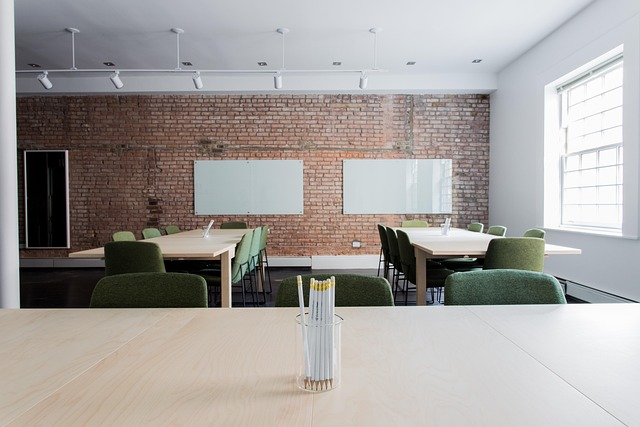In a world where digital platforms increasingly mediate learning, the capacity to weave inventive thinking into online study routines has become a prized asset. Creativity no longer sits as a peripheral skill; it is now a core driver that transforms passive absorption of facts into dynamic construction of meaning. When learners actively experiment with ideas, they create richer knowledge webs that are easier to retrieve and adapt. This quiz invites you to explore how you channel creative energy into virtual classrooms, and it offers instant feedback that nudges you toward more engaging study habits.
Why Creativity Fuels Knowledge Building
Knowledge building thrives on the intersection of curiosity, experimentation, and reflection. In an online setting, learners can access a vast array of resources, yet without creative approaches the content risks becoming a flat list of items. By reframing questions, visualizing concepts, or linking ideas across disciplines, students move beyond surface-level recall to deeper understanding. Research shows that creative engagement boosts retention by up to 30% and enhances problem‑solving abilities. This section breaks down the three pillars—curiosity, experimentation, and synthesis—that underpin creative learning, and gives you quick tips to incorporate them into your digital routine.
- Curiosity: Start with “what if” questions that turn routine readings into exploratory adventures.
- Experimentation: Use breakout sessions, simulations, or digital mind maps to test hypotheses in a risk‑free space.
- Synthesis: Connect newly acquired facts with personal experiences or real‑world scenarios to cement understanding.
Ready to Test Your Creative Edge?
The quiz below is designed as a quick, self‑contained challenge. Read each scenario, pick or write the answer that best reflects how you would incorporate creative thinking into the described online learning situation. At the end of the quiz, you’ll find a brief interpretation of your choices that points out your strengths and areas to grow. You don’t need any external tools—just a moment to reflect on your habitual study patterns.
“Learning is a creative act, not a mechanical one.” – Adapted from educational thought leaders.
Question 1: The Ever‑Evolving Lecture
Your instructor posts a three‑hour lecture transcript each week. Instead of reading the entire transcript straight through, how do you maximize your creative absorption?
- Read it cover to cover, then re‑watch the video to reinforce key points.
- Highlight unfamiliar terms, look up definitions, and note any connections to prior lessons.
- Break the transcript into 10‑minute chunks, summarize each chunk in a single sentence, and create a mind map linking the chunks.
- Ignore the transcript and rely solely on the video’s visual cues.
Answer: 3
Question 2: Peer‑Generated Resources
Your class has a shared digital folder where students upload study aids. You notice a variety of formats—PDFs, audio clips, short videos. Which approach best harnesses this diversity to deepen your understanding of the course material?
- Pick the most comprehensive PDF and use it as a primary reference.
- Randomly select an item each day to keep the process exciting.
- Create a themed playlist that groups resources by concept, then test your recall after each group.
- Share a summary of each resource with classmates for collaborative feedback.
Answer: 3
Question 3: Online Discussion Boards
In a discussion forum, you encounter a topic that has sparked heated debate. To contribute constructively and creatively, which strategy would you adopt?
- Post a concise rebuttal with a single counter‑argument.
- Share a personal anecdote that illustrates a different perspective, and invite others to reflect.
- Quote several posts verbatim and criticize their logic without adding new insights.
- Compose a series of questions that encourage others to explore underlying assumptions.
Answer: 4
Reflection: Applying Creativity to Your Learning Plan
Now that you’ve navigated a few scenarios, pause and think about the current structure of your study routine. Write down two concrete actions you can take to weave more creativity into your daily online learning tasks. Consider elements such as resource diversification, interactive tools, or reflective journaling. After you finish, give yourself a small reward for embracing creative practice.
Interpreting Your Quiz Performance
If you selected primarily options that emphasize analysis, synthesis, and interaction, you’re already leaning toward a creative learner profile. The quiz is designed to spotlight moments where creative strategies can make a difference, so any answer that encourages active engagement or novel perspective indicates a solid base. Conversely, if your choices leaned toward passive consumption—such as reading whole documents or watching videos without interaction—there’s room to cultivate creativity. The next step is to experiment with one new creative technique in each study session and observe how your engagement and comprehension evolve.
Beyond the Quiz: Cultivating Creativity in Online Education
Creativity is not a static trait but a skill that can be nurtured. Below are five practical habits that can help you sustain creative momentum in virtual learning environments:
- Curate a “creative toolbox”: Keep a digital notebook with prompts, visual templates, and brainstorming templates to use whenever you feel stuck.
- Schedule “innovation blocks”: Allocate 15–20 minutes in each study session for free exploration—experiment with a new learning app, try a different note‑taking style, or brainstorm applications of the topic.
- Seek cross‑disciplinary connections: Actively look for parallels between your current subject and unrelated fields; this can spark fresh insights.
- Teach back creatively: Create a short video or a set of interactive slides to explain what you’ve learned; teaching forces you to reorganize knowledge.
- Reflect and adjust: At the end of each week, write a brief reflection on which creative methods worked, which didn’t, and why.
Final Thought
In the realm of online education, the ability to transform static information into living, interconnected ideas is the hallmark of a learner who truly understands. By challenging yourself with scenarios that demand inventive solutions, you not only sharpen your creative instincts but also build a knowledge base that is flexible, resilient, and ready for real‑world application. Keep experimenting, keep reflecting, and let creativity be the engine that drives your academic journey forward.




